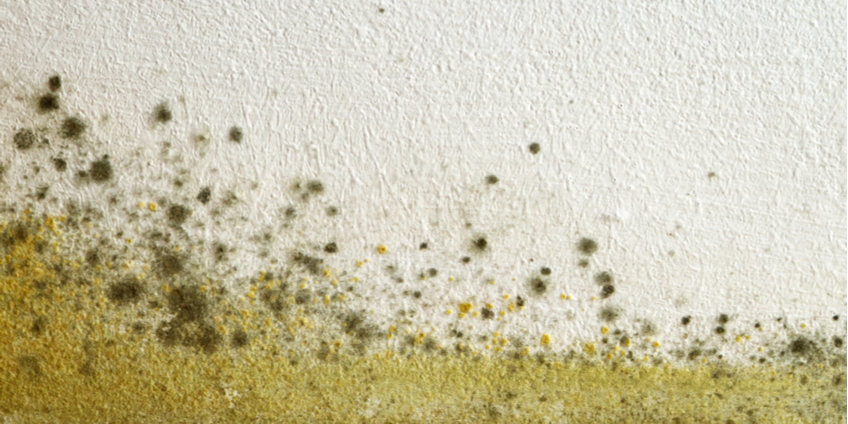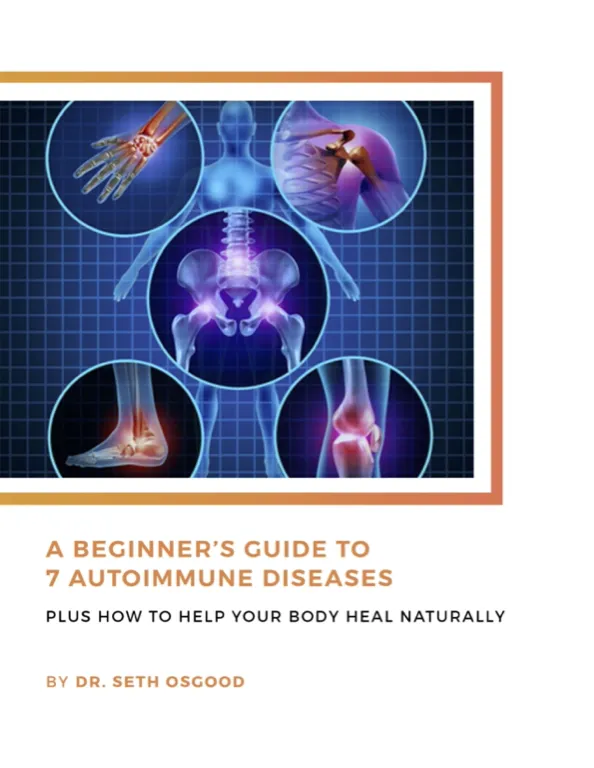One of the most frustrating aspects of Candida overgrowth is that it can be very challenging to get rid of. People treating their Candida at home often go on a Candida diet, take antifungal supplements, and see their symptoms disappear, only for them to come back again a few weeks or months later.
When a patient comes to see me who is trapped in this vicious cycle, I immediately investigate mold or mycotoxin exposure as a root cause.
They usually say, “That can’t be it, I haven’t seen any mold in my house”, but that doesn’t mean it isn’t there! The right testing often uncovers that hidden mold is behind their recurrent Candida and other mysterious symptoms.
What is Toxic Mold & Where is It Hiding?
Mold is a natural part of the environment and most types are not harmful. However, certain strains of mold release gas-like chemicals called mycotoxins that permeate the air and environment.
These toxins cause high levels of systemic inflammation, often with extreme reactivity to certain chemicals and foods. They also adversely affect your mitochondria, the powerhouse of every cell in your body, and drastically impact your energy levels.
Signs of toxic mold exposure include:
- Fatigue, muscle weakness, and joint pain
- Cognitive impairment, including brain fog, confusion, headaches, and difficulty concentrating
- Candida overgrowth, food sensitivities, and histamine intolerance
- Coughing, difficulty breathing, or asthma
- Skin issues, rashes, eczema, or psoriasis
Many modern homes and buildings are now tightly sealed for energy efficiency. This creates a breeding ground for mold. The particles are typically too small for the eye to see and it’s often hiding behind walls, inside air vents, and in furniture, carpets, and clothing. It’s even found in foods, such as grains, coffee, peanuts, corn, and dried fruit.
One thing to note is that some people are genetically more susceptible to mold than others. It may be that one or a few members of a household are ill while others are unaffected. This can make it very difficult to pinpoint the environment as the problem.
How Toxic Mold Makes Candida Overgrowth Worse
Candida overgrowth, especially Candida that won’t go away, is a manifestation of a problem with the immune system. Candida is an opportunistic organism, meaning it will overgrow and proliferate when it sees an opening.
When your immune system is strong and hardy, it keeps Candida in check. When your immune system is weakened, Candida has the opportunity to flourish and wreak havoc throughout your body.
Mycotoxins have been shown to suppress immune function, which allows Candida to proliferate and makes it harder to eliminate. Studies have also found they damage the gut endothelial lining, meaning they cause leaky gut and allow Candida to escape the digestive tract and become a systemic problem.
Testing for Toxic Mold
If you suspect toxic mold, one simple starter option is to stay somewhere else (ideally for two weeks) to see if your symptoms improve. You can think of this as an elimination diet for mycotoxins.
There are also a number of tests for your home or body to detect a toxic mold exposure. When working with patients in our Adaptation Program, I use a urine test from Real Time Labs to screen for 16 types of mycotoxins and their environmental assessment to check for mold and in patients’ homes.
Treating Toxic Mold
Here’s the process I use in my clinic.
1. Treat the root of the problem by removing the mold from your environment.
This can be quite a big undertaking, but it’s necessary for long-term recovery. You’ll need to hire a mold remediation specialist to locate and remove all of the mold in your home and prevent it from regrowing. You may also need to replace furniture, rugs, curtains, mattresses, and other items that cannot be fully cleaned.
2. Support safe detoxification.
Toxic mold puts a significant strain on your detox pathways and immune system. Use an acetylated liposomal glutathione supplement to reduce inflammation and oxidative stress and promote detoxification. Drink lots of filtered water and use infrared sauna therapy to flush out toxins via your sweat. Reduce your overall toxic burden by choosing organic food, using toxin-free personal care products, and filtering your air and water. Get plenty of rest and find ways to relieve stress so your body can recover.
3. Treat your Candida overgrowth and repair your gut.
With the underlying issue tackled and immune function restored, you can address your gut imbalances with diet, herbal antimicrobials, and lifestyle.
Mold illness can be very complex and there are often multiple health issues involved. If you are struggling to put the pieces together, I highly recommend working with a functional medicine provider to get the right testing and a personalized treatment protocol. We’ve worked with many toxic mold patients in our Adaptation Plus program who’ve overcome debilitating fatigue, neurological issues, and recurrent Candida with a functional approach.
About the Author: Dr. Seth Osgood is a Doctor of Nursing Practice, Board Certified Family Nurse Practitioner and Institute of Functional Medicine (IFM) Certified Practitioner. Dr. Osgood received his post-graduate training in Functional Medicine through the IFM and from working with Dr. Amy Myers. He has helped people from around the world improve their health utilizing a Functional Medicine approach.
Want to work with Dr. Osgood and the GrassRoots team? Become a patient in our West Lebanon, New Hampshire Functional Medicine clinic, our Burlington, Vermont Functional Medicine clinic, or our Austin, Texas Functional Medicine clinic!





